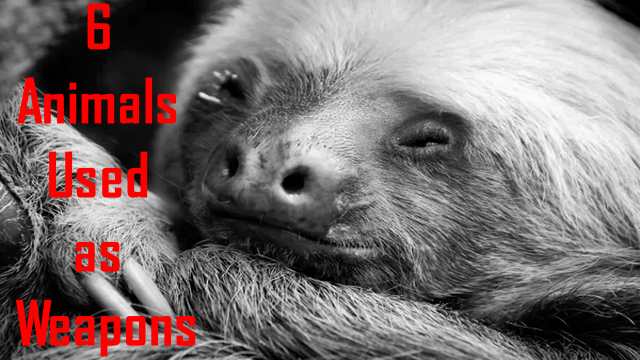The Unseen Heroes of War
Throughout history, animals have played a crucial role in warfare, often serving as unsung heroes on the battlefield. From carrying soldiers to pulling cannons, their contributions have been invaluable. However, some of the most bizarre and shocking uses of animals in war reveal a darker side of human ingenuity.
In this article, we will explore some of the craziest and most brutal uses of animals in warfare, showcasing the lengths to which humans have gone in the name of victory.
1. Anti-Tank Dogs: A Tragic Tale of Loyalty and Sacrifice
One of the most harrowing examples of animal exploitation in war is the use of anti-tank dogs during World War II. Developed by the Soviet Union, these dogs were trained to locate food under tanks. In a cruel twist, they were starved before battles, leading them to dive under enemy tanks in search of sustenance. Each dog carried a bomb weighing between 10-12 kg, designed to detonate upon impact.

While Soviet sources claimed that these dogs destroyed around 300 German tanks, the strategy had devastating consequences. Many dogs, frightened by the chaos of battle, returned to their handlers, resulting in tragic accidents where they inadvertently killed Soviet soldiers. This led to the grim order that soldiers should shoot any returning dogs. By 1942, the Soviet Union abandoned the use of anti-tank dogs, recognizing the moral and practical failures of the program.
2. Bat Bombs: A Fiery Idea Gone Awry
The concept of bat bombs may sound like something out of a science fiction novel, but it was a genuine military strategy during World War II. Inspired by the Japanese attack on Pearl Harbor, Lytle Adams, a dentist from Pennsylvania, proposed using bats to spread incendiary devices across Japan. Given that many Japanese homes were constructed from flammable materials, the plan aimed to create chaos with minimal casualties.

The U.S. military invested approximately $2 million into the project, which involved capturing bats, placing them in hibernation containers, and attaching small bombs to their backs. Once released, the bats would seek dark places, often settling in attics, where the bombs would ignite. Despite the initial enthusiasm, the project was ultimately shelved in favor of developing the atomic bomb, marking another bizarre chapter in the history of wartime animal use.
3. Mare Distraction: Ancient Warfare Tactics
In ancient warfare, distraction was a powerful strategy. King Thutmose III of Egypt faced a formidable opponent in the King of Kadesh, who sought to exploit a weakness in Thutmose’s forces. The Kadesh king devised a clever plan: he released a mare in heat during battle, causing chaos among Thutmose’s stallions.

Historical records indicate that this tactic was remarkably effective, disrupting enemy lines and allowing Kadesh to gain a temporary advantage. This incident highlights the innovative and often unconventional strategies employed in ancient warfare, where even the instincts of animals could be manipulated for military gain.
4. Explosive Rats: A Desperate Measure
As World War II raged on, Britain found itself in dire straits and sought unconventional methods to undermine German forces. The “rat bomb” was one such idea, involving actual rat carcasses filled with explosives. The plan was to infiltrate German coal supplies, where the rats would be shoveled into boilers, detonating upon exposure to heat.

Unfortunately for the British, the Germans caught wind of this bizarre strategy, leading to its abandonment. This episode serves as a reminder of the lengths to which nations would go in their quest for victory, even resorting to the use of dead animals as weapons.
5. Cat Guidance System: A Feline Folly
In a bizarre attempt to guide missiles to their targets, the U.S. military once considered using cats. The idea was that if a cat were attached to a bomb and dropped near an enemy ship, its instinct to avoid water would somehow lead the bomb to its target. However, the plan was never fully developed, as the logistics of such a strategy were questionable at best.

This peculiar concept underscores the often absurd lengths to which military strategists have gone in search of innovative solutions, even if they defy logic.
6. Monkeys on Fire: A Disturbing Historical Use
The use of monkeys in warfare dates back to ancient China, where they were employed as incendiary devices. During a battle between the Southern Song forces and the Yanzhou army, monkeys were dressed in straw, soaked in oil, and set ablaze. The panicked animals were then released into enemy camps, igniting fires and causing chaos.

This shocking tactic highlights the brutal reality of war, where the lives of animals were sacrificed for the sake of strategy. It serves as a grim reminder of the darker aspects of human conflict and the lengths to which people will go to achieve victory.
Conclusion: The Complex Relationship Between Humans and Animals in War
The stories of animals used in warfare reveal a complex and often troubling relationship between humans and the animal kingdom. While these creatures have served valiantly alongside soldiers, their exploitation raises ethical questions about the morality of using sentient beings as tools of war. As we reflect on these historical examples, it is essential to recognize the sacrifices made by these animals and to consider the implications of their use in future conflicts.

